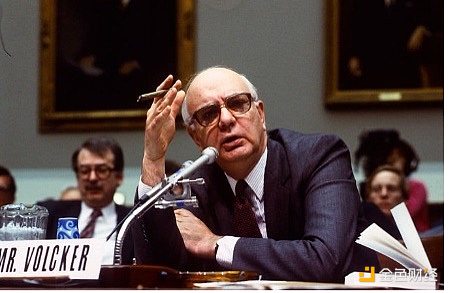
Author: Shawn, founder of Articlehoke Capital; Translation: Golden Finance xiaozou
Stablecoin is exciting. The upcoming stablecoin legislation in the United States is a once-in-a-lifetime opportunity to upgrade the financial system.
Financial historians will find this surprisingly similar to the birth and development trajectory of money market funds about half a century ago.
Money market funds were invented in the 1970s and were mainly used as cash management solutions for enterprises.
At that time, banks in the United States were prohibited from paying interest on checking account balances, and companies were usually unable to open savings accounts. If a company wants to make idle funds profitable, it must purchase U.S. Treasury bonds, sign a repurchase agreement, invest in commercial paper or transferable certificates of deposit. Just managing cash requires such a tedious and high-touch process.
Money market funds adopt a constant share value structure, with a price of USD anchored by each share.
Reserve Fund Company is the first money market fund. It started with $1 million in 1971 and is positioned as a "convenient alternative to direct investment in temporary cash balances". These funds are usually invested in money market instruments such as treasury bonds, commercial paper, bank acceptance bills or certificates of deposit.
Thereafter, investment giants such as Dreyfus (now Bank of New York Mellon), Fidelity Investment, and Pioneer Group quickly followed. Nearly half of the growth of Pioneer Group's legendary mutual fund business in the 1980s came from its money market funds.
Former Federal Reserve Chairman Paul Volker (in office from 1979 to 1987) was strongly critical of money market funds and was still opposed until 2011.
The many criticisms made by today's makers of stablecoins are exactly the same as the accusations against money market funds half a century ago: * Systemic risks and threats to the robustness of the banking industry. Unlike deposited institutions (such as banks), money market funds do not have deposit insurance and lender-lasting mechanisms, so they are prone to bank runs, aggravating financial instability and risk of contagion. There are also concerns that deposits flow from insured banks to money market foundations weaken the banking industry because banks will lose their low-cost and stable deposit base.
* Unfair regulatory arbitrage. Money market funds provide banking services by maintaining a stable net worth of USD 1, but are not subject to strict regulation or capital requirements.
* Decrease currency conduction. As more funds flow out of the banking system and entering money market funds, traditional currency instruments such as reserve requirements have declined, which may weaken the monetary effect of the Federal Reserve.
Money market funds now hold more than $7.2 trillion in financial assets. For reference, the M2 money supply (basically excluding money market fund assets) is US$21.7 trillion.
The rapid growth of fund asset management scale in the late 1990s stems from the relaxation of financial regulation (the Financial Services Modernization Act GLBA abolished the Grass-Steagle Act and triggered a wave of financial innovation), while the Internet boom brought more efficient electronic trading systems, accelerating the speed of funds flowing to money market funds.
Did you see the law? (It is worth noting that the regulatory disputes over money market funds have not yet stopped, even half a century later. The US Securities and Exchange Commission passed a money market fund reform plan in 2023, including raising minimum liquidity requirements and eliminating the manager's restrictive power on investor redemption.)












